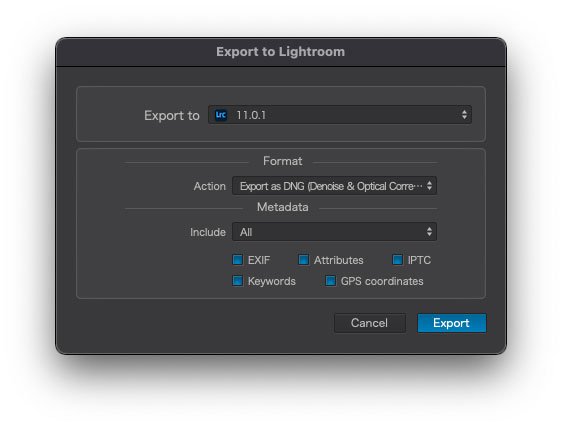

DxO offers a small guide to the three ways of setting up relationships with Lightroom depending on how you want to use each tool.

However, I believe in all cases this still requires doubling up on your images and managing both RAW and JPG files which I am trying to minimize. However, it's processing speed is considerably slower than either CaptureOne or Lightroom.ĭxO has made attempts to be better integrated into Lightroom and offers three different ways to manage your images based on using Lightroom as the asset management tool. While it can do all this automatically, it also has the ability to fine tune a large number of attributes as in CaptureOne and Adobe products. It will also compensate for wide angle shots where perspectives get thrown out, stretched, etc., great for architectural shots. What I really like about DxO is the quality of its RAW noise reduction and is also calibrated to take into consideration specific camera and lens combinations. Manipulating images has all the usual tools for fine tuning including sharpening, noise reduction, curves, shadow/highlight and more.ĭxO Optics is also a product of interest. The file management in CaptureOne is also very intuitive including the directory structure for importing, sorting and processing files. Importing from a card or camera is dead simple and automatic.
#DXO OPTICS PRO NOISE REDUCTION SOFTWARE#
I'm still learning the software but I bet some presets can be built to do specific things but right now I'm concentrating on the best quality raw converter. Using these auto functions on a whole shoot is a real time saver and it's the fastest to complete processing the images. I also find that choosing the auto white point and auto everything gives really awesome results as compared to the auto stuff in DxO, Lightroom and PS. What it has going for it is superiorI really like the raw converter. I believe it's RAW converter is superior to Adobe as well. This would require Lightroom to manage JPGs instead of raw, or manage both and increase my disk space requirements (5D II raw files are ~25MB!). At least till now, I haven't found a way to retain the settings as I output to DNG. CaptureOne and DxO does allow a DNG export but I lose the edits. So, now that I see what CaptureOne (and even DxO Optics) can do, I'm frustrated that I can't seem to export the RAW files with my develop settings from CaptureOne (or DxO) to Lightroom and retain those develop settings. This has cut down significantly on my files and disk space since I have far fewer jpgs or tiffs than when I converted everything from RAW to JPG! I'll create jpgs if I used a print house but only convert the few images I plan to print. directly from RAW or create an appropriately web-sized jpg as needed. I can upload to flickr, my blog, my website, etc. My workflow in Lightroom keeps my most of my images in RAW. I find myself using photoshop only for noise reduction and specific touch ups and perspective corrections. The toolset is awesome as is the asset management. I really like Lightroom, especially since version 2 came out.


 0 kommentar(er)
0 kommentar(er)
